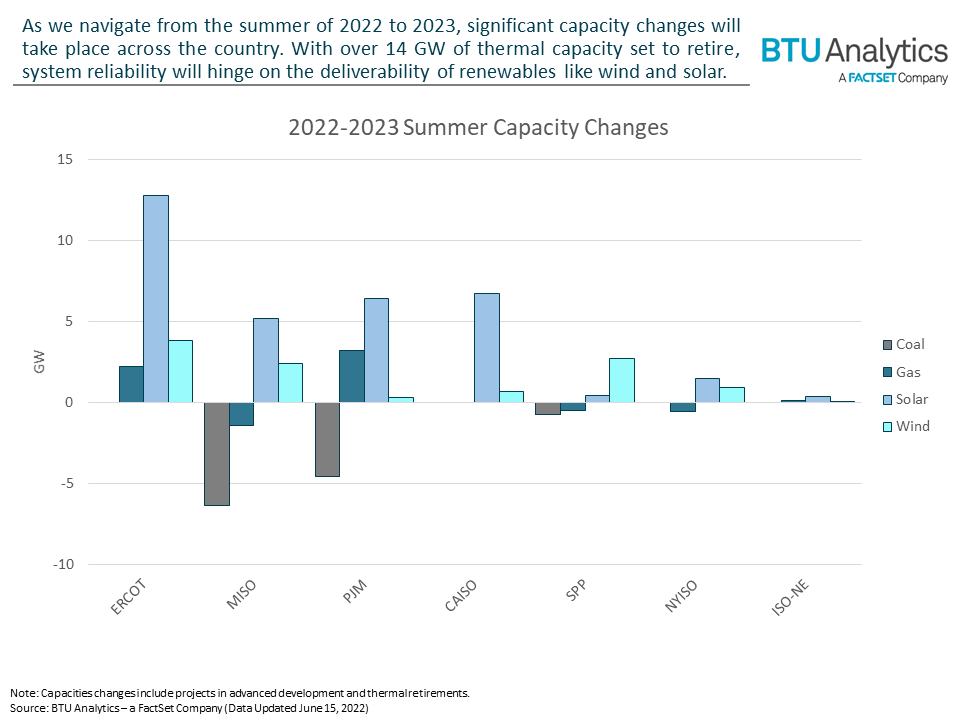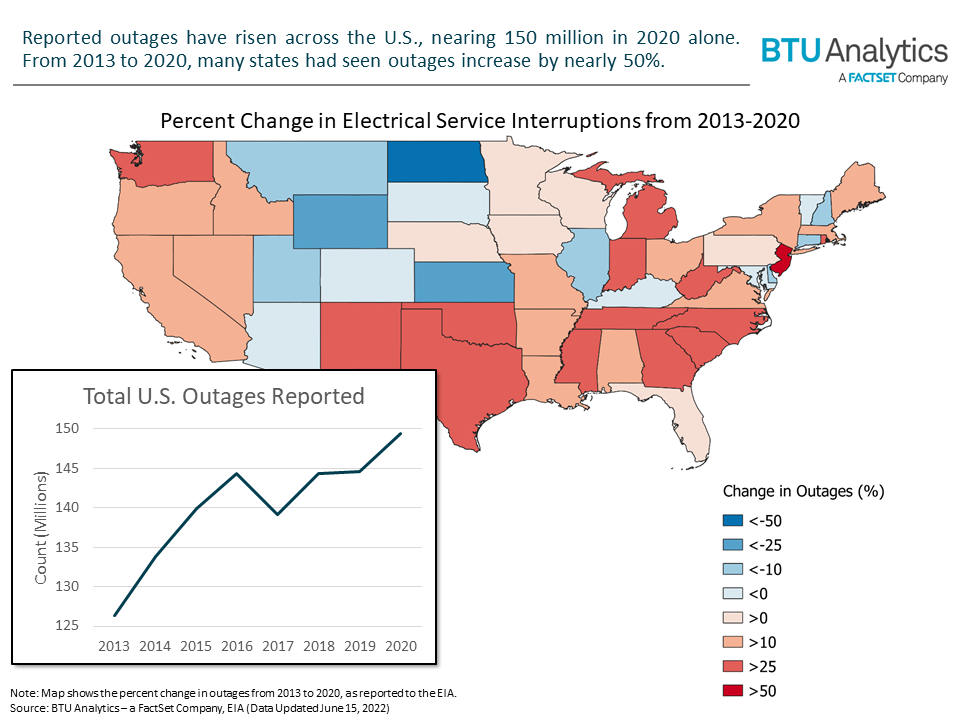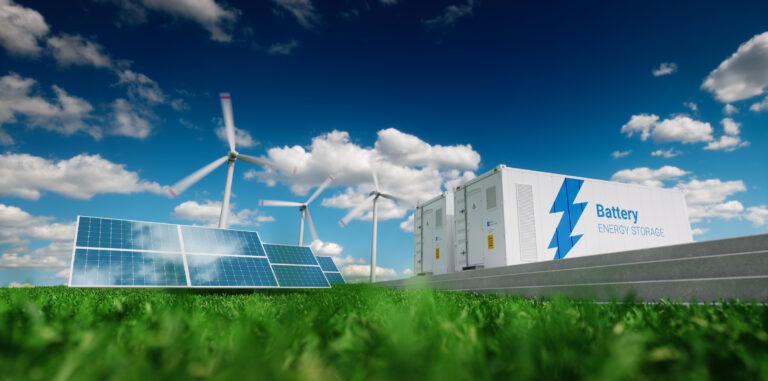Summer has yet to begin, and we have already seen the pressures that extreme temperatures, retiring thermal generation, and increased renewables have placed on ISO reserve margins. Soaring temperatures in May sent ERCOT’s market into shock, and MISO recently announced a capacity shortfall for the upcoming summer. With consumption returning to pre-pandemic levels around the country, peak demand continues to reach record highs and put ISO reserve margins to the test. In today’s Energy Market Insight, we will discuss the outlook on regional resource adequacy and how that has affected blackouts across the U.S.
Up until the onset of COVID-19, peak demand had been on the rise across the US, driven by increasingly hotter summer temperatures. As ISOs look to the future, rising electric vehicle sales and the electrification of residential, commercial, and industrial processes have all been used as the rationale for increasing demand outlooks.

The trend of rising peak demand has come into conflict with two supply-side trends: the retiring of thermal resources and the buildout of intermittent renewables. Intermittent generation alone fails to address the needs of rising demand during peak hours and may not be able to completely backfill lost dispatchable generation.
The balancing act that grid operators are trying to strike, that of replacing carbon-intensive generators with intermittent resources, is on display in the graphic below. In the next year alone, more than 10 GW of thermal assets are expected to retire, making any delay to new wind or solar capacity very risky.

Even with retirements on the rise, natural gas, and sometimes coal, will continue to hold their place as the marginal generator during times of peak load. However, as Winter Storm Uri in Texas showed, these assets can be pulled out of service unexpectedly when they are needed most.

In most of the regions, there is a clear upward trend in the offline capacity, shown above. In the case of MISO, unplanned outages averaged 20 GW during the peak hours of Summer 2021 and 2020 – a stark increase from levels reported in prior years. For CAISO and ERCOT, outage levels reached record highs in 2021.
Retiring dispatchable generation, increased intermittent resources, and a trend of increasing outages all point in one direction: increased load shedding events (aka blackouts). That has been the case for several years now, as seen in the map below. Sustained outages from non-extreme weather events (hurricanes, blizzards, etc.) have been on the rise over the last decade, hitting just under 150 million events in 2020.

From the figure above, Texas and the Southeast show significant increases in outage reports. In ERCOT, renewable growth is of the highest in the country while peak loads have been on the rise, likely contributing to the 44% increase of service interruptions.
For all the ISOs, maintaining regional reliability is at the forefront. However, market dynamics and social pressures have left grid operators with a difficult task: maintain reliability at times of higher load with less dispatchable generation. Until energy storage can step in to fill the gap, that task will likely become more difficult and put many regions of the US in the dark.









